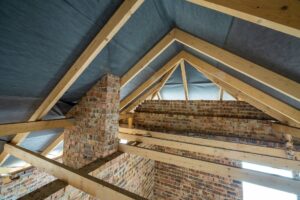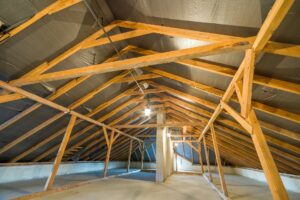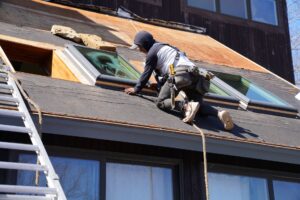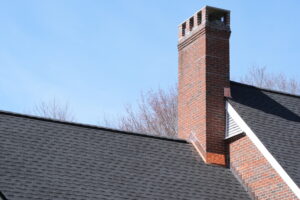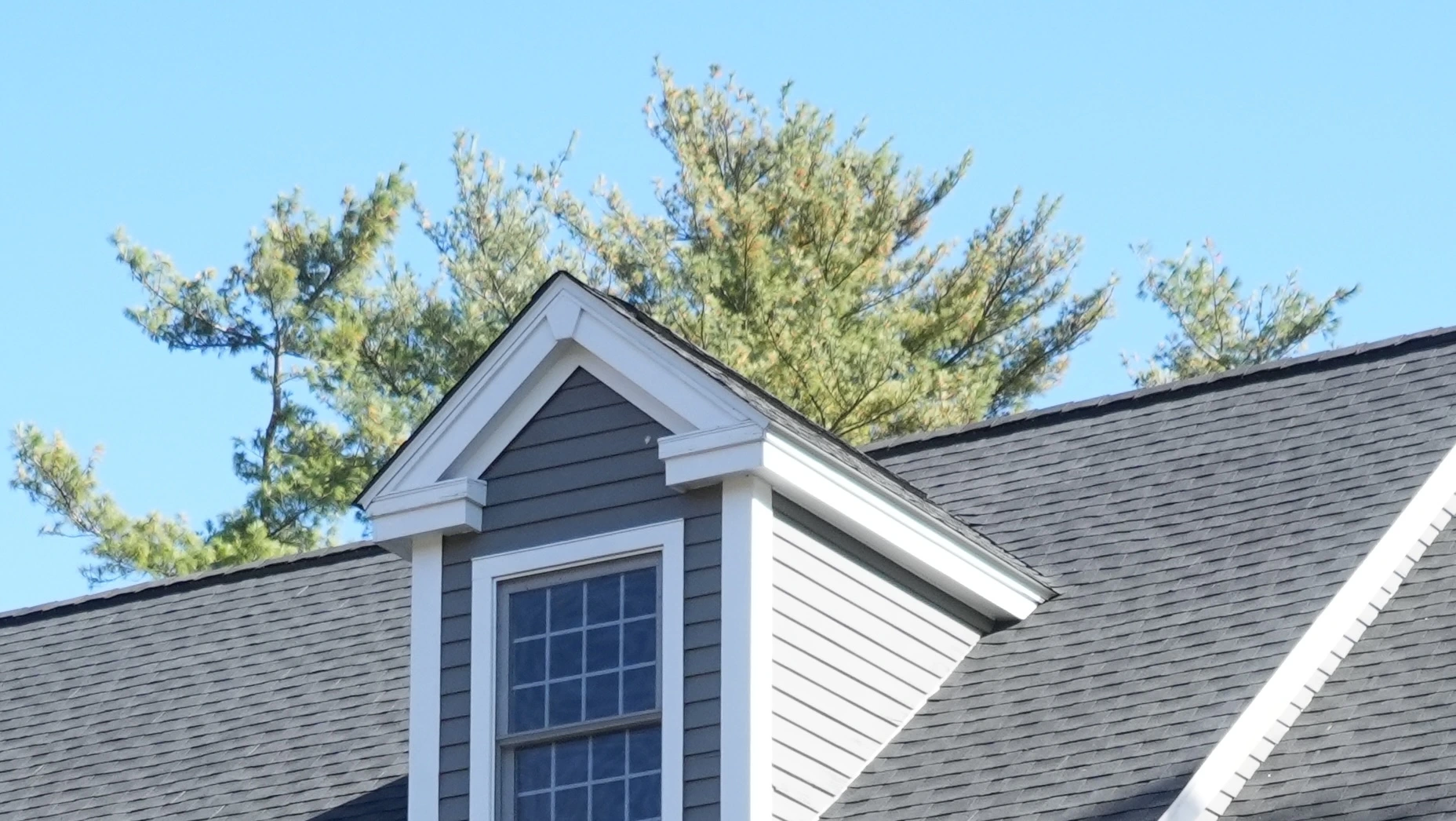
The importance of proper roof and attic ventilation for homes in New Hampshire and Southern Maine cannot be overstated. A well-designed and maintained ventilation system is essential for protecting your home from potential damage caused by moisture, condensation, and heat buildup. As the leading residential roofing contractor in the region, J. Carnes & Son Roofing understands the critical role that effective ventilation plays in preserving your home’s integrity, comfort, and energy efficiency.
Many homeowners overlook or underestimate the significance of roof and attic ventilation. An inadequate ventilation system can lead to a host of problems, including mold and mildew growth, decreased indoor air quality, damage to roofing materials, and increased energy consumption. To ensure your ventilation system is up to par, it’s essential to understand the benefits of proper ventilation, the different types of ventilation systems available, and the factors to consider when assessing your home’s ventilation needs.
Proper roof and attic ventilation can provide several benefits for homeowners in New Hampshire and Southern Maine, including the following:
1. Enhanced Indoor Air Quality: Efficient ventilation systems work to expel stale, moisture-laden air from your home, replacing it with fresh outdoor air, reducing humidity levels, and curbing mold and mildew growth.
2. Improved Energy Efficiency: By minimizing heat buildup in the attic during the summer months, a properly ventilated roof system can help reduce your home’s cooling costs and overall energy consumption.
3. Extended Roof Lifespan: Effective ventilation helps to prevent excessive heat and moisture accumulation that can damage roofing materials over time, reducing the risk of costly repairs or premature roof replacement.
J. Carnes & Son Roofing is committed to helping homeowners make informed decisions about their roof and attic ventilation systems. Our experienced team offers expert advice and quality services designed to optimize your home’s ventilation, ensuring long-term comfort and protection.
Understanding Different Types of Roof and Attic Ventilation Systems
There are several types of roof and attic ventilation systems available, each designed with specific advantages and suited to particular situations. Common types include the following:
1. Ridge Vents: Installed at the peak of a sloped roof, ridge vents allow hot air to escape from the attic as it rises. They typically work in conjunction with soffit vents, promoting fresh air intake and ensuring optimal airflow.
2. Gable Vents: Mounted on the exterior walls of your home, gable vents are placed near the roof peak. They provide an additional means of ventilation and air circulation, working well in conjunction with soffit or ridge vents.
3. Roof Vents: Installed on the roof surface itself, roof vents – also known as roof louvers – aid in removing hot air and moisture from your attic. Available in various designs and materials, roof vents blend seamlessly with your roof’s aesthetics while also providing a practical function.
4. Soffit Vents: Positioned beneath the eaves, soffit vents allow fresh air to enter the attic, circulating throughout the space and encouraging hot, moist air to exit through ridge or roof vents. Properly placed soffit vents ensure balanced airflow for optimal ventilation performance.
Assessing Your Home’s Ventilation Needs
To determine the most effective ventilation system for your home, it’s crucial to assess your specific needs and existing conditions. The factors to consider in evaluating your home’s ventilation requirements include the following:
1. Size and Layout: The total area of your home’s attic, along with its shape and layout, directly affects the amount of ventilation needed to maintain optimal airflow.
2. Climate: New Hampshire and Southern Maine’s climate, characterized by cold winters and warm, humid summers, can significantly impact your home’s ventilation needs and the type of system best suited for the local weather conditions.
3. Age and Condition of the Roof: Older homes may have inadequate or outdated ventilation systems, requiring an upgrade to ensure proper airflow and prevent potential damage from moisture and heat buildup.
J. Carnes & Son Roofing can provide a comprehensive assessment of your home’s current ventilation system, taking into account these factors and offering expert recommendations for improvements or upgrades as needed.
Improve Your Home’s Ventilation with Insulation and Sealing
In addition to installing and maintaining a well-designed roof and attic ventilation system, other steps can be taken to improve the overall effectiveness and efficiency of your home’s ventilation.
1. Insulation: Ensure your attic floor is adequately insulated, helping to prevent heat transfer between living spaces and the attic. This step can significantly improve your home’s overall energy efficiency and comfort.
2. Sealing: Identify and seal air leaks around windows, doors, and other openings to minimize drafts and prevent warm, moist air from entering your attic. Proper sealing is crucial for maintaining balanced attic ventilation and preventing moisture issues.
3. Proper Vent Positioning: Guarantee the optimal placement of ventilation vents, allowing fresh air intake and proper exhaust flow throughout the attic space. The proper positioning of vents ensures the most efficient use of your system and prevents potential problems caused by unbalanced airflow.
Routine Maintenance for Optimal Performance
Follow these guidelines to keep your roof and attic ventilation system functioning at its highest potential:
1. Regularly Inspect Vents: Check your ventilation vents for signs of damage, blockages, or debris accumulation, and clear them as needed to maintain unhindered airflow.
2. Monitor Attic Conditions: Keep an eye on your attic’s temperature and humidity levels, addressing any fluctuations or concerns promptly to prevent damage and maintain optimal ventilation performance.
3. Professional Assessments: Schedule professional inspections periodically to ensure your ventilation system is functioning correctly and meeting your home’s needs adequately. J. Carnes & Son Roofing can provide expert evaluations and recommendations to optimize your ventilation system’s performance, ensuring long-term comfort and protection.
Conclusion
Proper roof and attic ventilation is an often-underestimated but essential aspect of maintaining your New Hampshire or Southern Maine home’s structural integrity, air quality, and energy efficiency. J. Carnes & Son Roofing is committed to providing expert advice, quality services, and personalized solutions to ensure your home’s ventilation system meets your unique requirements. By understanding the benefits, types, and maintenance tips for effective roof and attic ventilation, you can make informed decisions and protect your home from the costly, damaging effects of inadequate airflow.
Need reliable roofing contractors in NH? Look no further than J. Carnes & Son Roofing! We are the leading and most trusted residential roofing contractor in New Hampshire and Southern Maine. Our team of experts is dedicated to delivering uncompromising workmanship and unrivaled service, using premium roof systems and the finest products paired with proven installation techniques. Contact us now and let us help you protect your home with our reliable roofing services.

